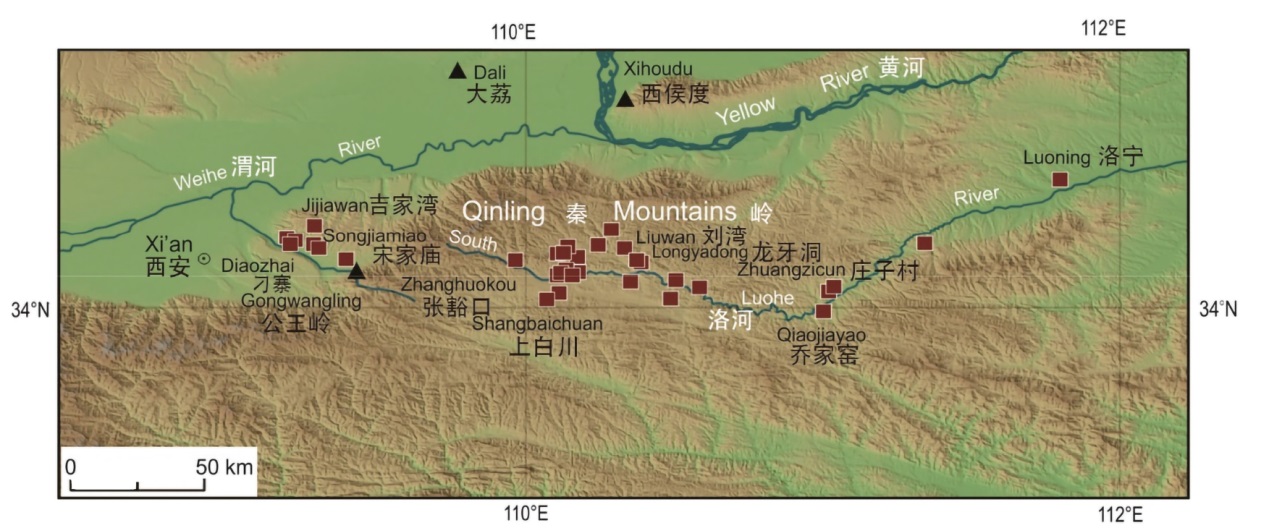| [1] |
Kibunjia M. Pliocene archaeological occurrences in the Lake Turkana basin[J]. Journal of Human Evolution, 1994, 27(1): 159-171
|
| [2] |
Semaw S. The World's Oldest Stone Artefacts from Gona, Ethiopia: Their Implications for Understanding Stone Technology and Patterns of Human Evolution Between 2.6-1.5 Million Years Ago[J]. Journal of Archaeological Science, 2000, 27(12): 1197-1214
|
| [3] |
Beyene Y, Katoh S, WoldeGabriel G, et al. The characteristics and chronology of the earliest Acheulean at Konso, Ethiopia[J]. Proceedings of the National Academy of Sciences, 2013, 110(5): 1584-1591
|
| [4] |
Toth N, Schick K. Why did the Acheulean happen? Experimental studies into the manufacture and function of Acheulean artifacts[J]. L'Anthropologie, 2019, 123(4): 724-768
|
| [5] |
Keeley LH, Toth N. Microwear polishes on early stone tools from Koobi Fora, Kenya[J]. Nature, 1981, 293(5832): 464-465.
|
| [6] |
Dominguez- Rodrigo M, Serrallonga J, Juan-Tresserras J, et al. Woodworking activities by early humans: a plant residue analysis on Acheulian stone tools from Peninj (Tanzania)[J]. Journal of Human Evolution, 2001, 40(4): 289-299
pmid: 11312582
|
| [7] |
Gao X, Guan Y. Handaxes and the Pick-Chopper Industry of Pleistocene China[J]. Quaternary International, 2018, 480: 132-140
|
| [8] |
Wang SJ, Lu JY. Taphonomic and paleoenvironmental issues of the Pleistocene loessic Paleolithic sites in the Qinling Mountains, central China[J]. Science China Earth Sciences, 2016, 59: 1519-1528
|
| [9] |
Norton CJ, Bae K. Erratum to “The Movius Line sensu lato (Norton et al., 2006) further assessed and defined” J. H. Evol. 55 (2008) 1148-1150[J]. Journal of Human Evolution, 2009, 57(3): 331-334
|
| [10] |
关莹, 高星. 旧石器时代残留物分析:回顾与展望[J]. 人类学学报, 2009, 28(4): 418-429
|
| [11] |
Leeuwenhoek A. Epistolae Physiologicae super Compluribus Naturae Arcanus: Epistolae 26[M]. Delphis: Apud Adrianum Beman, 1719
|
| [12] |
Reichert ET. The differentiation and specificity of starches in relation to genera, species, etc.; stereochemistry applied to protoplasmic processes and products, and as a strictly scientific basis for the classification of plants and animals (Vol. Pt.2)[M]. Washington DC: Carnegie institution of Washington, 1913
|
| [13] |
Fritzsche J. Ueber das Amylum[J]. Annalen der Pharmacie, 1834, 12(2-3): 263-276
|
| [14] |
Guan Y, Pearsall DM, Gao X, et al. Plant use activities during the Upper Paleolithic in East Eurasia: Evidence from the Shuidonggou Site, Northwest China[J]. Quaternary International, 2014, 347: 74-83
|
| [15] |
Hardy BL, Kay M, Marks AE, et al. Stone tool function at the paleolithic sites of Starosele and Buran Kaya III, Crimea: Behavioral implications[J]. PNAS, 2001, 98(19): 10972-10977
pmid: 11535837
|
| [16] |
Liu L, Bestel S, Shi J, et al. Paleolithic human exploitation of plant foods during the last glacial maximum in North China[J]. PNAS, 2013, 110(14): 5380-5385
doi: 10.1073/pnas.1217864110
pmid: 23509257
|
| [17] |
Loy TH, Spriggs M, Wickler S. Direct evidence for human use of plants 28,000 years ago: starch residues on stone artefacts from the northern Solomon Islands[J]. Antiquity, 1992, 66(253): 898-912
|
| [18] |
Langejans G. Micro-residue analysis on Early Stone Age Tools from Sterkfontein South Africa: A Methodological enquiry[J]. The South African Archaeological Bulletin, 2012, 67(196): 120-144
|
| [19] |
Salleh A. Bloody stone tools tell hominids' tales[CP/OL]. Retrieved from http://www.abc.net.au/science/articles/2004/07/19/1156792.htm
|
| [20] |
Williamson. Prehistoric stone tool residue analysis from Rose Cottage Cave and other Southern Africa sites[D]. Johannesburg: University of Witwatersrand, 2000
|
| [21] |
Van Peer P, Fullagar R, Stokes S, et al. The Early to Middle Stone Age Transition and the Emergence of Modern Human Behaviour at site 8-B-11, Sai Island, Sudan[J]. Journal of Human Evolution, 2003, 45(2): 187-193
pmid: 14529653
|
| [22] |
Marlize L. Distribution Patterns of Organic Residues on Middle Stone Age Points from Sibudu Cave, Kwazulu-Natal, South Africa[J]. The South African Archaeological Bulletin, 2004, 59(180): 37-44
|
| [23] |
Williamson BS. Down the microscope and beyond: Microscopy and molecular studies of stone tool residues and bone samples from Rose Cottage Cave[J]. South African Journal of Science, 1997, 93(10)
|
| [24] |
Williamson BS. Middle Stone Age tool function from residue analysis at Sibudu Cave[J]. South African Journal of Science, 2004, 100(3)
|
| [25] |
Haslam M. The decomposition of starch granules in soils: implications for archaeological residue analyses[J]. Journal of Archaeological Science, 2004, 31(12): 1715-1734
|
| [26] |
Perry L. Starch analyses reveal the relationship between tool type and function: an example from the Orinoco valley of Venezuela[J]. Journal of Archaeological Science, 2004, 31(8): 1069-1081
|
| [27] |
Chandler-Ezell K, Pearsall DM. “Piggyback” microfossil processing: Joint starch and phytolith sampling from stone tools[J]. The Phytolitharien, 2003, 15: 2-8
|
| [28] |
Duncan NA, Pearsall DM, Benfer RA. Gourd and squash artifacts yield starch granules of feasting foods from preceramic Peru[J]. Proceedings of the National Academy of Sciences, 2009, 106(32): 13202-13206
|
| [29] |
Pearsall DM, Chandler-Ezell K, Zeidler JA. Maize in ancient Ecuador: results of residue analysis of stone tools from the Real Alto site[J]. Journal of Archaeological Science, 2004, 31(4): 423-442
|
| [30] |
关莹, Pearsall DM, 高星, 等. 石制品残留物分析的实验室方法-以水洞沟石制品处理为例[J]. 人类学学报, 2010, 29(4): 130-140
|
| [31] |
Torrence R. Ancient Starch Research[M]. Walnut Creek, California: Left Coast Press Inc, 2006
|
| [32] |
Pearsall DM. Paleoethnobotany[M]. California: Left Coast Press Inc, 2015
|
| [33] |
Henry AG, Ungar PS, Passey BH, et al. The diet of Australopithecus sediba[J]. Nature, 2012, 487(7405): 90-93
|
| [34] |
O'Connell JF. Tubers and human evolution[A]. In: TorrenceB, BartonH(Eds). Ancient starch research[M]. Walnut Creek, CA: Left Coast Press Inc, 2006, 20-21
|
| [35] |
Teaford MF, Ungar PS. Diet and the evolution of the earliest human ancestors[J]. PNAS, 2000, 97(25): 13506-13511
doi: 10.1073/pnas.260368897
pmid: 11095758
|





